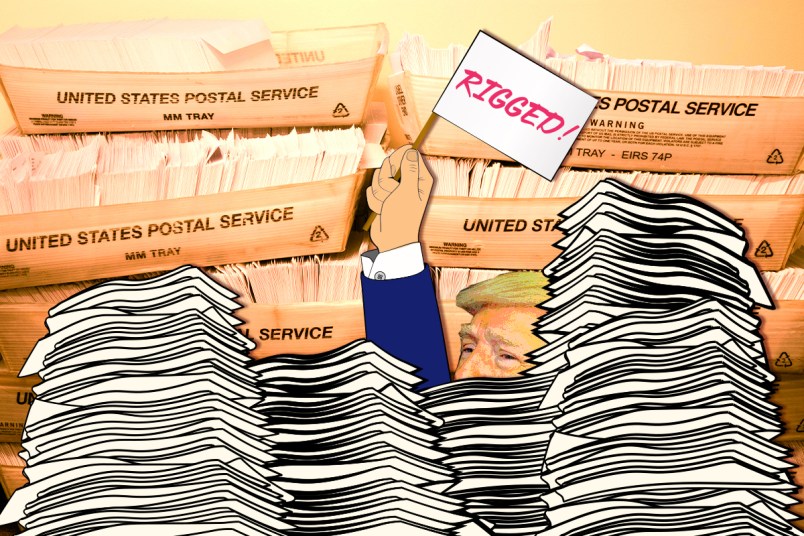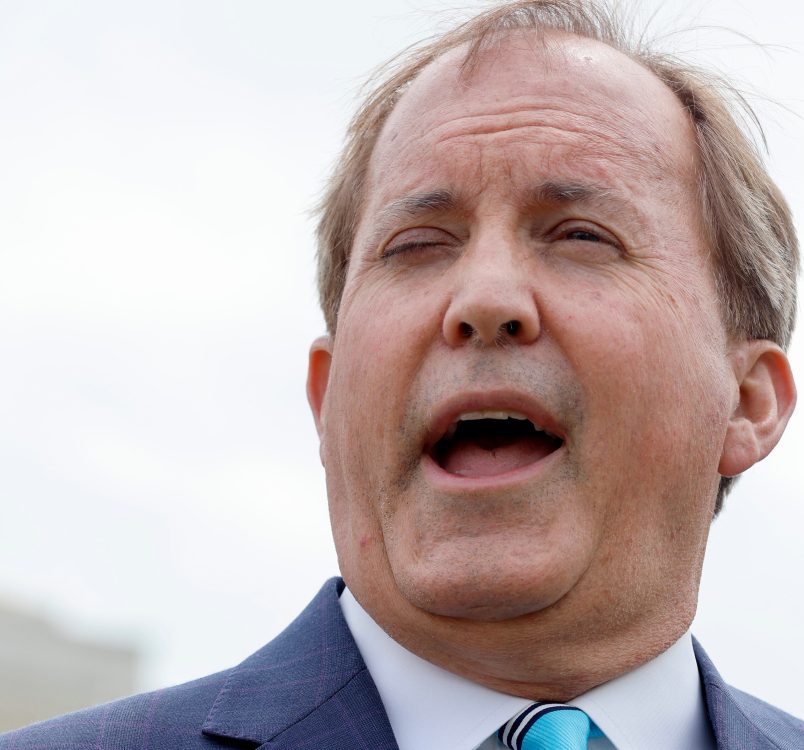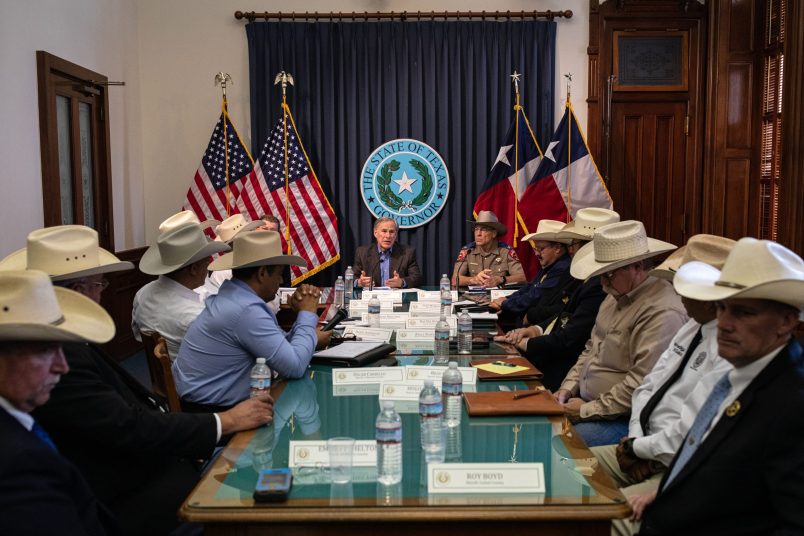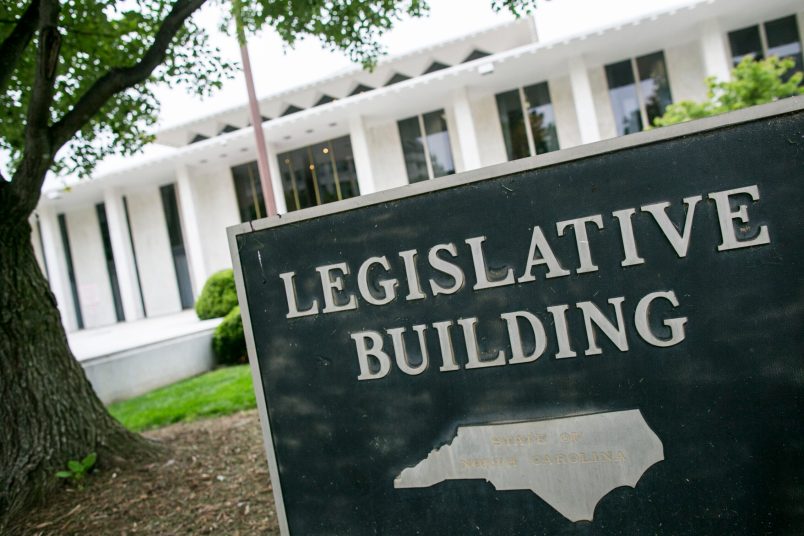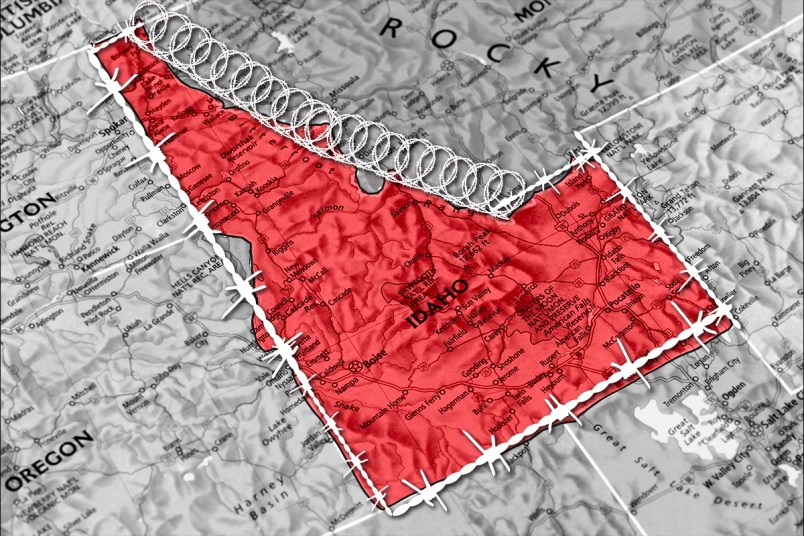It’s looking increasingly likely that Pennsylvania could be a focus in any post-election legal fight over who won the presidency. Already, the state has been the site of some of the most sprawling and aggressive litigation over how voters will cast ballots during the pandemic, and one of those cases is already being teed up for a U.S. Supreme Court appeal.
President Trump narrowly won Pennsylvania in 2016, and it could very well serve as the tipping-point state that decides whether he is re-elected. Meanwhile, the COVID-19 outbreak — and the surge in vote-by-mail it has caused — has posed a particularly daunting set of challenges for the state, which before this year saw very low levels of absentee voting. So far, there hasn’t been much progress in the negotiations between Democratic Gov. Tom Wolf and Pennsylvania’s Republican legislature over measures that could smooth out the mail balloting process.
Here’s a look at the current state of play and what could be the biggest sources of controversy come Nov. 3:
The ongoing legal chaos around how to vote could confuse voters.
Many hoped that a state Supreme Court court opinion issued earlier this month would resolve the biggest disputes around this year’s election rules, and give administrators the certainty they need to finish up their election planning, while refining their voter education efforts.
However, the Pennsylvania Republicans who had been involved in the state court litigation have indicated that they’ll appeal to the U.S. Supreme Court a part of the state court decision. Meanwhile the Trump campaign and RNC have doubled down on trying to get the federal judiciary to rework several aspects of Pennsylvania’s plans for carrying out the election.
After being put on hold while the state court litigation was wrapping up, the federal case was brought back to life earlier this month. The Trump camp filed an amended complaint that seemed aimed at keeping in flux several issues that in theory should have been resolved by the state Supreme Court. For instance, the Trump campaign is still challenging the use of ballot dropboxes, by going after the way that Pennsylvania counties plan to set them up, even though the state Supreme Court already declared their use legal. The amended complaint also added new claims, including a challenge to the state’s guidance advising that signature matching for ballots was not necessary.
In a statement, Trump campaign spokesperson Thea McDonald dismissed the “false narrative that this case was effectively over last month,” while touting “President Trump’s fight for the free, fair election Pennsylvania voters deserve.”
“We look forward to resolving these serious issues and guaranteeing that every Pennsylvania voter has their vote counted—once,” she said.
Trump’s opponents in the litigation believe that this scattershot approach is aimed at maximizing voter confusion.
“Part of the goal of the lawsuit is to muddy the waters,” Sarah Brannon, an ACLU lawyer who is involved in the case, told TPM.
The state Republicans’ plans for a U.S. Supreme Court appeal appear far more narrow. It seems they’ll be asking the justices to prohibit the counting of absentee ballots that arrive after the election but lack a postmark confirming they were put in the mail by Election Day.
Regardless, county election officials told TPM that the continued uncertainty was hampering their ability to finalize their election plans. Voter advocates worry that the legal back-and-forth is creating a confusing news environment for voters who already are navigating a vote-by-mail process they’re not very familiar with.
“There’s this constant drum beat of voters not knowing and not completely understanding the process,” Suzanne Almeida, the executive director of the Pennsylvania chapter for the voting rights group Common Cause, told TPM.
Preventing the mass rejection of ‘naked ballots’ has become a focus of voter advocates.
While the state Supreme Court opinion, which also extended the deadline by when mailed-in ballots must be received, was generally regarded as a win for voter access, what it said about so-called “naked ballots” could prove to be an obstacle for voters. The court ruled that ballots that arrive without their “secrecy envelope” — the inner envelopes that keep private the ballots themselves — must automatically be rejected.
Before the court’s decision, the state was encouraging counties to count those “naked ballots” during the primary. Because of that approach, it’s hard to estimate now how big of a risk for disenfranchisement the new ban on counting them poses. Philadelphia officials told lawmakers that their review of the issue in a 2019 municipal election showed that a whopping 6.4 percent of absentee ballots were returned without a secrecy envelope.
“Obviously we’ll need to do a lot of messaging,” Larry King, a spokesperson for Bucks County’s election officials, told TPM.
Voters won’t be guaranteed an opportunity to fix other discrepancies with their mail-in ballots.
Another overlooked aspect of the recent state Supreme Court opinion is that it rejected a request that the court order a statewide requirement for a “cure” period: a window during which voters are given the opportunity to fix discrepancies on their mail-in ballots. Counties still have the option to offer a curing opportunity, but it’s not clear yet whether every county will in fact set up such a process. TPM reached out to election officials in the 10 most populous counties in Pennsylvania, and only two confirmed that voters would have some sort of opportunity to fix issues on their ballots.
Will there be a GOP push to stop the counting when results take longer than usual to report?
Because Pennsylvania will be accepting ballots delivered within the three days after Nov. 3, and because it currently does not let the processing of any absentee ballots begin before Election Day morning, the state is expected to be among the slowest in the country to report its results. In June’s primary, it took two weeks for the winners in several races to be announced. The volume of ballots that will need to be counted in November will be much greater than the primary.
This reality is why it’s so troubling that President Trump continues to falsely insist that the results that are reported later than Election Day will somehow not be legitimate.
The legislature and the governor have been trading proposals to let the so-called “precanvass” period start earlier than it does now, allowing election officials to begin processing, but not tabulating, ballots. Exactly what such adjustment would look like, and whether they’ll even be able to reach a deal, is very much in flux.
The good news is that several election officials told TPM they had acquired new counting machines and were expanding their staff capacity in a way that they hope will decrease the time it takes to tally results in the general.
Philadelphia, for instance, is renting out space in its convention center for processing. It and other counties have added several high-speed scanners and mail sorters to their arsenal, as well.
But, according to Montgomery County Clerk Lee Soltysiak, if more time isn’t given on the front end for processing, “We will not be finished on election night.”
“And that’s okay, as long as the expectations are understood,” he said.
An expected increase in provisional ballots could provide fuel for baseless fear-mongering.
Election officials expect the number of provisional ballots to be notably higher than what’s usual this election. That doesn’t mean anything fishy is happening — the explanation why the increase is likely makes a ton of sense. But there’s still a threat that Republicans could point to those numbers to suggest baselessly that something is amiss.
There are several reasons why a provisional ballot could be cast, but one reason in particular is expected to drive an increase this year. If a voter who previously requested an absentee ballot shows up to vote in person, she will be required to vote provisionally unless she brought her mail ballot with her to be voided. As was the case in the primary, many voters are expected to end up in this situation — either because they didn’t get their mail ballots in time, they changed their mind about voting in person, or they are worried their mail ballots aren’t guaranteed to arrive in time to be counted.
Those provisional ballots are allowed to be counted once it’s confirmed that the voter in question hasn’t submitted a mail ballot that should be counted instead.
Records released in the federal Trump campaign lawsuit litigation revealed, during the primary, that the campaign’s poll watching operation looked very closely at provisional ballots, and at potential errors that could lead to double voting.
But a large number of provisional ballots, by itself, does not signify anything malicious, nor does a tabulation that takes longer because of the time it takes to assess whether those ballots should be counted.


